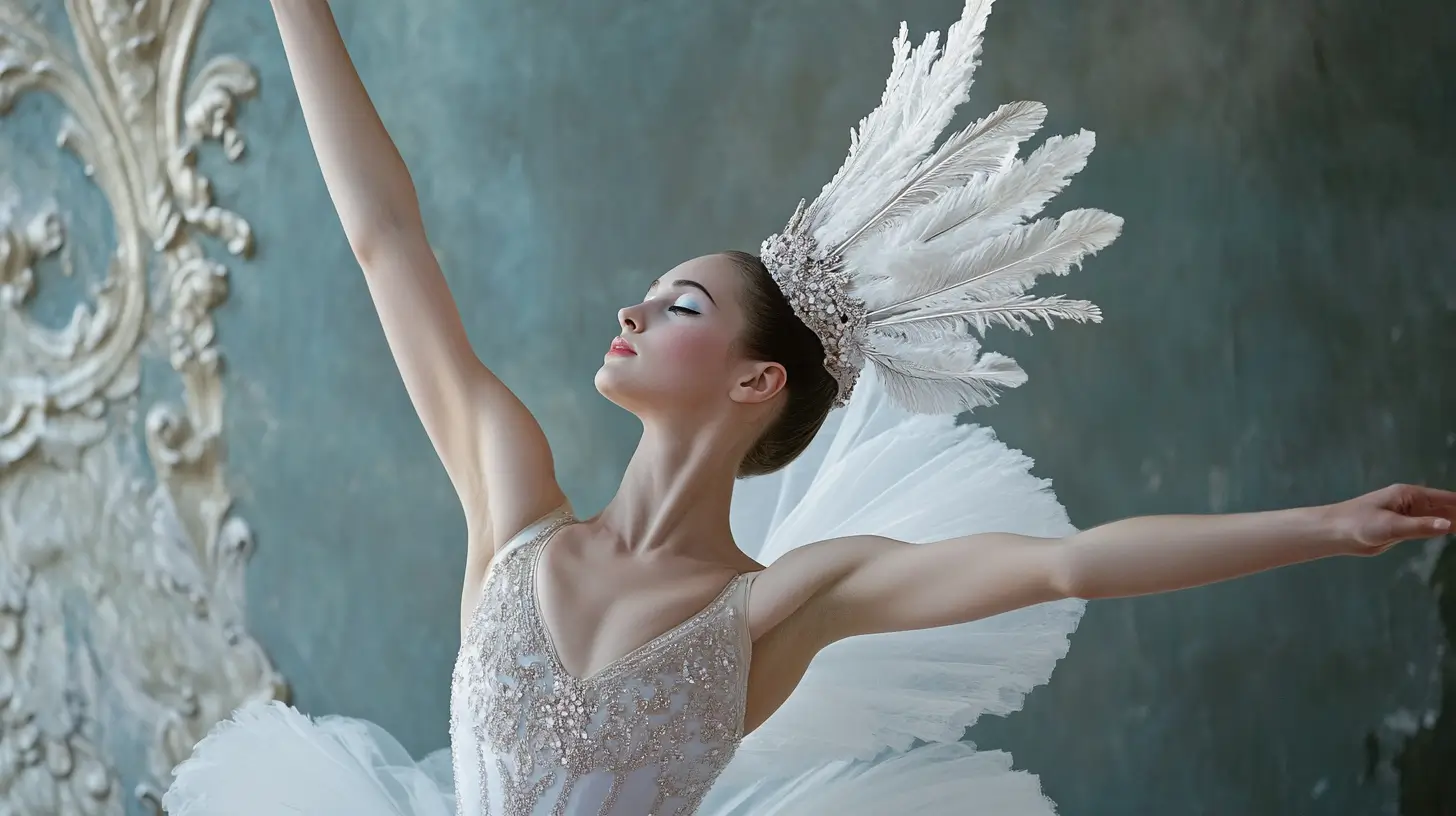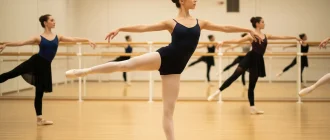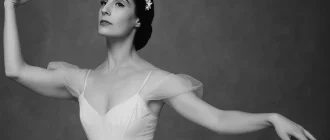Are you looking for an introduction to the most influential ballerinas in history? Our list of well-known ballerinas highlights those who have contributed significantly to ballet. From pioneers and the first ballerina who shaped the early foundations to modern icons pushing contemporary boundaries, discover the remarkable dancers who have left an indelible mark on the ballet world.
Many of these dancers were nurtured and supported by renowned ballet companies, which played a crucial role in their development and success.
Graceful Insights
- Ballet pioneers, including Anna Pavlova, Alicia Markova, and Galina Ulanova, established foundational practices and high standards that continue to influence modern dance.
- Modern icons like Misty Copeland and Tamara Rojo have broken barriers and redefined ballet by blending traditional and contemporary styles, with their rigorous ballet training enhancing representation within the art form.
- Legendary partnerships in ballet, notably those of Margot Fonteyn with Rudolf Nureyev and Sylvie Guillem with Russell Maliphant, have transformed performances, setting new standards and inspiring future generations.
Art de Podcast
| Rank | Ballerina | Era | Nationality | Notable Achievements/Contributions | Signature Ballet Roles |
|---|---|---|---|---|---|
| 1 | Anna Pavlova | Early 20th Century | Russian | Famous for “The Dying Swan,” she was known for her expressive technique and helping popularize ballet globally. | “The Dying Swan,” “Giselle” |
| 2 | Margot Fonteyn | Mid 20th Century | British | She was known for her long career and partnership with Rudolf Nureyev and for being the Prima Ballerina Assoluta of The Royal Ballet. | “Romeo and Juliet,” “Swan Lake” |
| 3 | Misty Copeland | Contemporary | American | First African American female principal dancer with the American Ballet Theatre (ABT), breaking racial barriers in ballet | “Firebird,” “Swan Lake,” “The Nutcracker” |
| 4 | Alicia Alonso | Mid 20th Century | Cuban | An iconic Cuban ballerina and choreographer known for her artistry despite near blindness. | “Giselle,” “Carmen” |
| 5 | Sylvie Guillem | Late 20th Century | French | Known for her extraordinary technique and flexibility, she was the first étoile promoted at the Paris Opera Ballet at 19 | “Don Quixote,” “Manon,” “Giselle” |
| 6 | Natalia Makarova | Mid-Late 20th Century | Russian-American | Defected from the Soviet Union to become a star with ABT and the Royal Ballet; known for her dramatic interpretations | “Swan Lake,” “Giselle,” “La Bayadère” |
| 7 | Diana Vishneva | Contemporary | Russian | Former principal dancer with the Mariinsky Ballet and ABT, known for her dramatic and emotional depth | “Romeo and Juliet,” “Swan Lake,” “Giselle” |
| 8 | Alessandra Ferri | Contemporary | Italian | Renowned for her graceful style and dramatic performances, Prima Ballerina Assoluta at La Scala | “Romeo and Juliet,” “Manon” |
| 9 | Tamara Rojo | Contemporary | Spanish | Former principal dancer with The Royal Ballet, artistic director of English National Ballet | “Giselle,” “Swan Lake,” “Manon” |
| 10 | Polina Semionova | Contemporary | Russian | Principal dancer at Staatsballett Berlin, acclaimed for her technical brilliance and elegance. | “Swan Lake,” “Don Quixote,” “Romeo and Juliet” |
Pioneers of Ballet
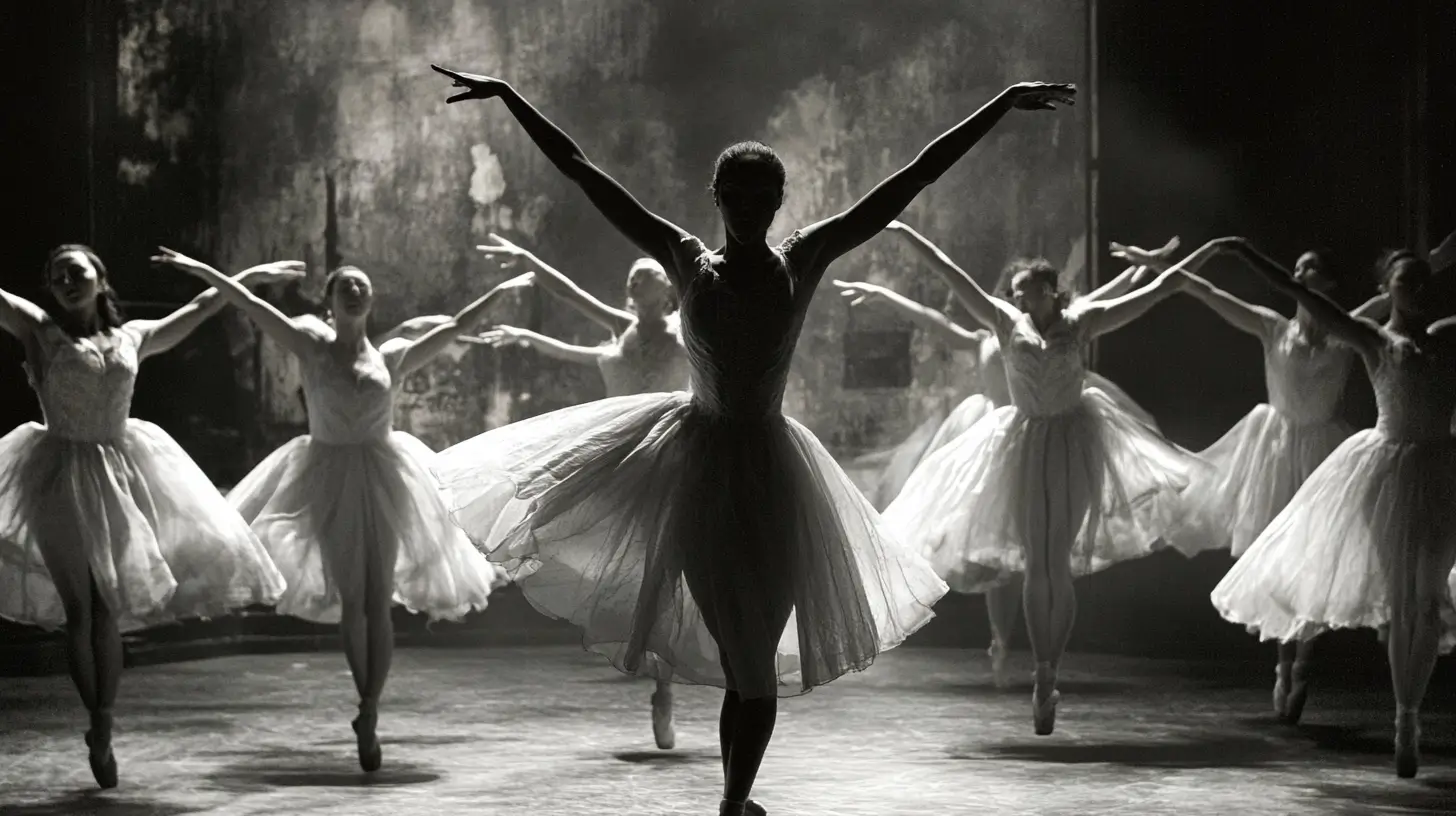
The pioneers of ballet are the bedrock upon which modern ballet stands. These early innovators laid the foundation with unparalleled dedication, artistry, and technical prowess. Figures like Anna Pavlova, Alicia Markova, and Galina Ulanova not only defined the standards of their time but also inspired countless aspiring dancers to pursue the art form. These pioneers are integral to ballet history.
Their contributions were not limited to performances; they shaped the very essence of ballet. These legendary dancers were instrumental in establishing ballet’s global reach, performing in prestigious venues, and nurturing future generations. The influence of these pioneers can still be seen in today’s ballet companies and performances.
Anna Pavlova
Anna Pavlova, synonymous with grace and dedication, is one of the most influential ballerinas ever. Born in Russia, she joined the Imperial Ballet School at age ten and overcame significant challenges, such as her thin ankles, which required extra support during training. Her commitment to the art form was evident early on, and it wasn’t long before she made her mark on the ballet world.
Pavlova’s performance in The Dying Swan remains iconic in ballet history. It showcased her extraordinary emotive abilities and defined her career. This role inspired many future ballet dancers, including the renowned choreographer Frederick Ashton.
Her innovative spirit extended beyond the stage. She incorporated the new medium of film into her performances, broadening ballet’s reach. Pavlova’s performances influenced many ballet companies, further spreading her impact.
Her extensive tours brought ballet to regions that had never experienced it before, including India, East Asia, and Australia. Her influence on the global stage was further cemented when she joined the Ballet Russe in 1909, a move that expanded her impact and solidified her legacy in the ballet world.
Alicia Markova: Prima Ballerina Assoluta
Alicia Markova, born December 1, 1910, began her illustrious career in ballet at a remarkably young age. By 14, she was already dancing lead roles, a testament to her prodigious talent and dedication. One of her most celebrated performances was as the Sugar Plum Fairy in The Nutcracker, a role that highlighted her technical skill and artistic grace.
Rigid ballet training shaped Markova’s early career and laid the foundation for her future success. As the first prima ballerina of the Royal Ballet in 1933, she set new standards for ballet performance and inspired countless aspiring dancers. Her directorship at the Metropolitan Ballet from 1963 to 1969 further demonstrated her commitment to nurturing the next generation of ballet talent.
Her legacy continues to influence the ballet world even after passing in 2004.
Galina Ulanova
Born on December 26, 1909, Galina Ulanova left an indelible mark on the ballet world with her deeply expressive performances. Her ability to convey complex emotions through dance set her apart from her contemporaries and earned her a place among the most famous ballerinas of her time. Ulanova holds a significant place in ballet history for her unparalleled contributions to the art form.
Ulanova’s legacy is one of profound artistic influence. Her performances in classic roles were technically impeccable and emotionally resonant, leaving audiences spellbound. Her influence continued to shape ballet long after her passing in 1998, inspiring dancers and choreographers to explore deeper emotional expression in their work.
Modern Icons of Ballet
![]()
As ballet evolved, so did its stars. Modern ballet icons have gained recognition for their innovative performances and ability to connect deeply with contemporary audiences. These dancers continue pushing the boundaries of classical and contemporary ballet, blending traditional techniques with modern dance elements to create breathtaking artistry.
Misty Copeland, Tamara Rojo, and Natalia Osipova have significantly contributed to the ballet industry. Their stories reflect modern ballet’s vibrant and dynamic nature, which continues to evolve while honoring its rich history. Ballet training has been crucial in shaping the careers of modern icons like Misty Copeland and Tamara Rojo.
Misty Copeland
Misty Copeland’s journey to becoming the first African American female principal dancer at the American Ballet Theatre is inspiring. Beginning her ballet training at the relatively late age of 13, Copeland quickly demonstrated extraordinary talent and dedication. Her achievements have broken barriers and paved the way for greater diversity in ballet.
In addition to her groundbreaking role at ABT, Copeland’s influence extends beyond the stage. She was honored with the Leonore Annenberg Fellowship in the Arts for her exceptional talent. Her memoir, Life in Motion, a New York Times bestseller, inspired countless aspiring dancers.
Her story is a testament to the power of perseverance and the importance of representation in the arts. Copeland’s achievements have influenced ballet companies worldwide, further promoting diversity and inclusion in the industry.
Tamara Rojo
Tamara Rojo, a renowned Spanish dancer, has significantly contributed to the ballet world as a performer and artistic director. Known for her technical skill and creative influence, Rojo’s performances have captivated audiences worldwide.
One of her most notable roles was in Romeo and Juliet alongside Carlos Acosta. This performance highlighted her exceptional talent and emotional depth. Rojo is significant in ballet history for her remarkable achievements and influence.
Rojo’s impact extends beyond her performances. As the artistic director at the English National Ballet, she has brought a unique vision to the company, influencing its direction and repertoire. Her leadership has inspired countless aspiring dancers and has ensured the continued relevance and innovation of the English National Ballet in the modern dance world.
Natalia Osipova
Natalia Osipova, a principal dancer at the Royal Ballet, is known for her extraordinary emotional range and ability to convey complex characters in classical and contemporary ballet. Starting her dance journey at age five, Osipova’s early promise in ballet training has translated into a stellar career marked by numerous accolades.
Osipova holds the record for the most wins by any female star at the National Dance Awards, a testament to her exceptional talent and versatility. Her performances with renowned companies like the American Ballet Theatre and the Royal Ballet have captivated audiences and solidified her status as one of the greatest ballet dancers of her generation.
Legendary Partnerships

Legendary partnerships in ballet have created some of the most memorable performances in dance history. These collaborations often emphasize the chemistry between dancers, elevating the art form to new heights and inspiring future generations. The partnerships of Margot Fonteyn and Rudolf Nureyev and Sylvie Guillem and Russell Maliphant are prime examples of how two artists can create magic on stage.
These iconic duos have captivated audiences and influenced the direction of ballet, setting new standards of excellence and artistry. Their legacy continues to inspire principal dancers and ballet companies around the world.
Margot Fonteyn and Rudolf Nureyev
The partnership of Margot Fonteyn and Rudolf Nureyev is often considered one of the most famous in ballet history. Their unique chemistry and combined artistry made their performances unforgettable and set new standards for ballet partnerships. Fonteyn, appointed prima ballerina assoluta by HM The Queen, brought grace and poise, while Nureyev, who sought political asylum in 1961, added a dynamic and intense energy to their collaborations.
Their performances together, such as in ‘Giselle’ and ‘Romeo and Juliet,’ captivated audiences worldwide and elevated both dancers to international stardom. Nureyev’s return to Russia in 1989 and subsequent passing in 1993 marked the end of an era, but their legacy lives on in the countless dancers they have inspired.
Sylvie Guillem and Russell Maliphant
Sylvie Guillem and Russell Maliphant’s partnership redefined the boundaries of ballet by blending classical repertoire with contemporary choreography. Guillem, who became a principal guest artist with the Royal Ballet after her time with the Paris Opera Ballet, brought her breathtaking artistry and technical prowess to their collaborations.
Their innovative approach and captivating performances have significantly influenced modern ballet, inspiring dancers and choreographers to explore new possibilities within the art form. Guillem’s ability to excel in classical and contemporary ballet has cemented her status as one of the most influential ballerinas of her time.
Male Ballet Legends
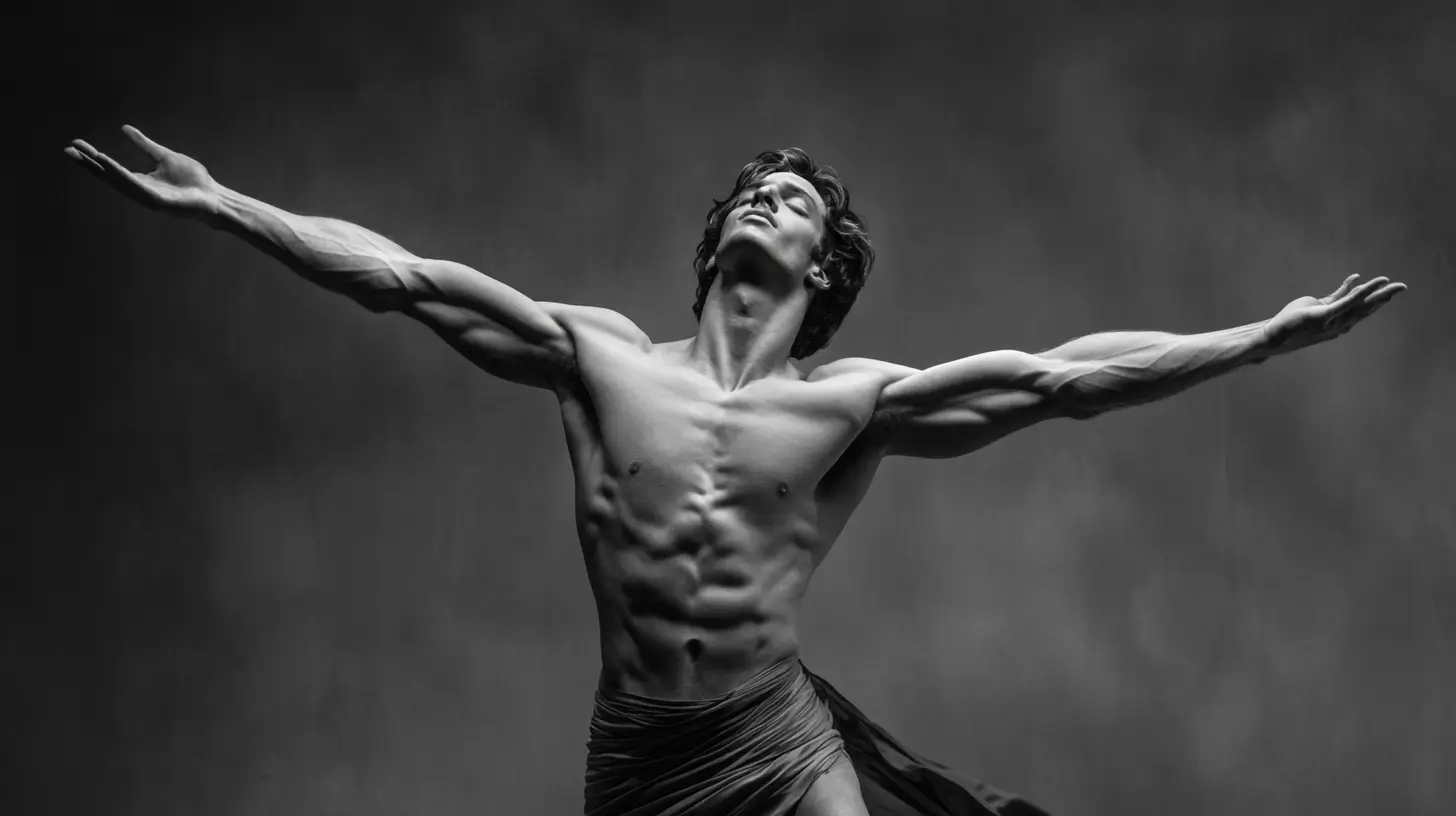
Male ballet dancers have played a crucial role in shaping the art form, transforming their responsibilities from merely supporting female dancers to becoming central figures in ballet performances. Legends like Rudolf Nureyev and Vaslav Nijinsky set new standards with their virtuosity and depth of characterization.
At the same time, Mikhail Baryshnikov and Carlos Acosta have continued to push the boundaries of ballet and contemporary dance. These are the greatest male ballet dancers and legends who are significant in ballet history.
Mikhail Baryshnikov
Born in 1948, Mikhail Baryshnikov is one of history’s most celebrated male ballet dancers. Starting his ballet training at nine, Baryshnikov quickly demonstrated his extraordinary talent. His partnerships with dancers like Natalia Makarova and choreographers like George Balanchine and Jerome Robbins have left an indelible mark on ballet.
Baryshnikov’s influence extends beyond the stage. As the artistic director of the American Ballet Theatre, he played a pivotal role in popularizing ballet in America. His performances in television and film brought ballet to a broader audience, further cementing his legacy in dance. Baryshnikov’s achievements have influenced ballet companies around the world.
Carlos Acosta
Carlos Acosta, a renowned Spanish dancer, has significantly contributed to ballet as a performer and a mentor. Born in 1973, Acosta trained at the National Ballet School of Cuba, where he honed his exceptional talent. His first American stage role as the Prince in ‘The Nutcracker’ began a stellar international career.
Joining the Royal Ballet in 1998, Acosta became one of its principal dancers with his early ballet training, performing numerous times with the American Ballet Theatre and other prestigious companies. His performances inspire young dancers worldwide, and he remains a principal guest artist with the Royal Ballet.
Rising Stars in Ballet
The world of ballet is witnessing a new generation of rising stars pushing boundaries and captivating audiences with their stunning performances. These young dancers bring fresh energy and perspectives to classical and contemporary ballet, ensuring the continued evolution of the art form. Ballet training plays a crucial role in the careers of rising stars like Marianela Núñez and Violetta Komyshan.
Marianela Núñez and Violetta Komyshan are two exceptional talents making waves in ballet. They represent the dedication and passion required of female ballet dancers to excel in this timeless art and offer a glimpse into its future.
Marianela Núñez
Marianela Núñez is an acclaimed Spanish ballet dancer who has garnered praise for her exceptional emotional range and technical skill. As a top-ranking female dancer at the Royal Ballet, Núñez has delivered numerous captivating performances that have resonated deeply with audiences.
Her ability to convey complex emotions through dance has made her one of the most sought-after performers in the ballet world. Núñez’s contributions to the Royal Ballet continue to inspire countless aspiring dancers and solidify her status as a leading figure in contemporary ballet. Núñez’s achievements have influenced ballet companies worldwide, extending her impact on the art form.
Violetta Komyshan
Violetta Komyshan is a rising star whose journey to fame is as modern as it is inspiring. Leveraging social media, Komyshan has showcased her talent to a global audience, breaking traditional barriers and connecting directly with fans. Her captivating performances and dedication have gained her fame and made her a role model for aspiring dancers worldwide.
Her online presence serves as a beacon for many young dancers who look up to her for inspiration. By sharing her ballet training and stunning performances, Komyshan encourages others to pursue their dreams despite challenges, embodying the spirit of modern ballet.
Influential Ballet Companies
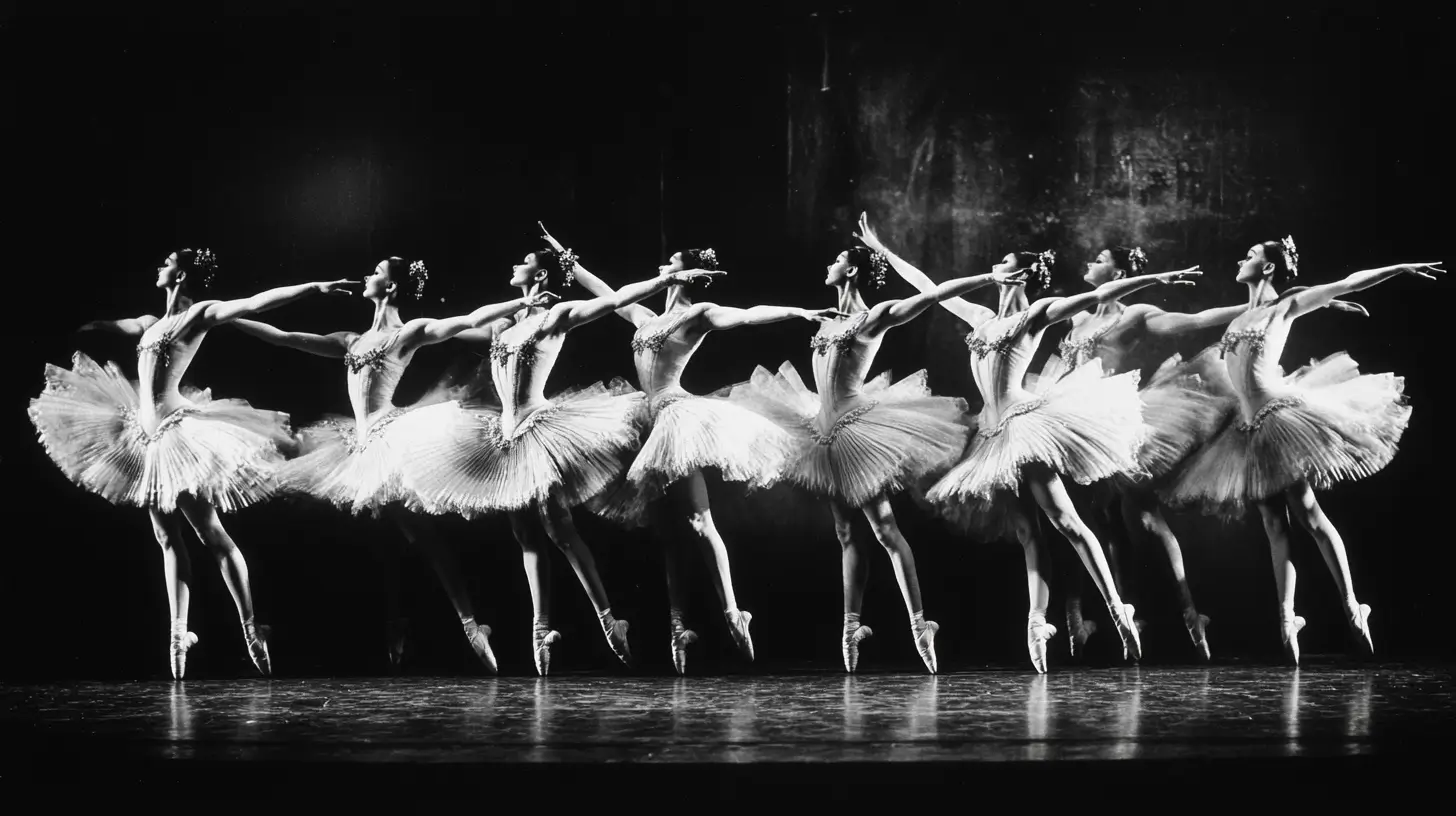
Ballet companies are pivotal in nurturing talent and shaping the art form. Institutions like the Royal Ballet and American Ballet Theatre have produced some of the greatest ballet dancers and contributed to the evolution of ballet through diverse repertoires and innovative performances.
These companies continue to inspire countless aspiring dancers and remain at the forefront of the ballet world. Their significant place in ballet history underscores their enduring influence and contributions.
This section delves into the histories and contributions of these influential companies, highlighting their impact on the dance world and their ongoing legacy in nurturing future generations of ballet stars.
Royal Ballet
The Royal Ballet, based in Covent Garden, London, has been a world-class institution since its founding in 1956. It evolved from the Vic-Wells Ballet and later the Sadler’s Wells Ballet. Under the guidance of Dame Ninette de Valois, the Royal Ballet developed its training methods based on Cecchetti and Vaganova techniques, which have become a cornerstone of its pedagogy.
With Sir Frederick Ashton as its chief choreographer, the Royal Ballet established a unique style characterized by a pliable upper body and quick footwork. The company’s rich history and commitment to excellence have produced numerous famous dancers and groundbreaking performances, making it a leading force in the ballet world.
Today, in the 20th century, the Royal Ballet holds a prestigious position in the global ballet community. It nurtures talent and produces acclaimed performances that inspire audiences and aspiring dancers at the Royal Ballet School.
American Ballet Theatre
Founded in 1939, the American Ballet Theatre (ABT) set out to create a diverse repertoire that includes the finest ballets from history. The company blends various ballet techniques, incorporating French, Russian, and Italian methods to maintain its classical and traditional dance style.
ABT is renowned for its wide range of performances and diverse group of talented dancers. The ballet company’s commitment to excellence and innovation has made it a prestigious institution in the industry, inspiring countless aspiring dancers and significantly contributing to the dance world.
Iconic Ballet Roles
Certain roles in ballet have become iconic, representing significant benchmarks in a dancer’s career. These roles, such as Odette/Odile in Swan Lake and the Sugar Plum Fairy in The Nutcracker, are technically demanding and emotionally rich, requiring dancers to showcase their skill and ability to convey deep emotions. Ballet training is crucial in preparing for these iconic roles and ensuring dancers meet high-performance demands.
This section explores these iconic roles, highlighting their importance in ballet history and their impact on performers and audiences. These roles continue to inspire and challenge dancers, contributing to the enduring legacy of ballet.
Odette/Odile in Swan Lake
The dual role of Odette/Odile in ‘Swan Lake’ is often considered one of the most challenging and rewarding for a ballerina. This role demands exceptional technical skill and the ability to convey the contrasting characters of the gentle, tragic Odette and the cunning, seductive Odile.
Notable performances of this role have been produced by renowned ballet companies such as the Bolshoi Ballet, the Royal Ballet, and the American Ballet Theatre.
Performing both roles in a single ballet showcases a dancer’s versatility and emotional depth, making it a significant benchmark in their career. The role’s complexity and the emotional journey continue to captivate audiences and push dancers to new heights.
Sugar Plum Fairy in The Nutcracker
The Sugar Plum Fairy in The Nutcracker is a beloved character who embodies the joy and magic of the holiday season. This role is central to the ballet’s festive tale and is known for its intricate choreography and graceful movements. The Sugar Plum Fairy holds a significant place in ballet history.
Performing as the Sugar Plum Fairy is a highlight for many ballerinas, symbolizing a career milestone. The role’s enchanting presence and technical demands make it a favorite among dancers and audiences alike, contributing to the enduring popularity of ‘The Nutcracker’ during the holiday season.
The Impact of Famous Ballerinas on the World of Ballet

Famous ballerinas have significantly shaped the world of ballet. They have inspired generations of dancers with their technical skills, artistic expression, and dedication to their craft. Many of these iconic dancers have also been instrumental in promoting ballet as an art form, taking it to new audiences and pushing the boundaries of what is possible.
Anna Pavlova, a russian ballerina widely regarded as one of the greatest ballet dancers of all time, is known for her iconic performance of “The Dying Swan,” which has become a benchmark for ballerinas worldwide. Margot Fonteyn, another legendary ballerina, was appointed Prima Ballerina Assoluta by Queen Elizabeth II and was instrumental in making the Royal Ballet an icon of British culture.
In recent years, ballerinas such as Misty Copeland have broken barriers and shattered stereotypes in ballet. Copeland, who became the first African American woman to be promoted to principal dancer at the American Ballet Theatre, has inspired a new generation of dancers with her technical skill, artistic expression, and dedication to her craft.
The impact of famous ballerinas on the world of ballet cannot be overstated. They have inspired generations of dancers, promoted ballet as an art form, and pushed the boundaries of what is possible. Their legacy continues to be felt today as ballet companies worldwide perform classical and contemporary works that showcase these iconic dancers’ technical skills and artistic expression.
Some of the world’s most famous ballet companies include the Royal Ballet, Paris Opera Ballet, American Ballet Theatre, and New York City Ballet. These companies have been instrumental in promoting ballet as an art form and have provided a platform for famous ballerinas to showcase their technical skills and artistic expression.
In addition to these companies, many other ballet companies worldwide are dedicated to promoting ballet as an art form. These companies include the Birmingham Royal Ballet, English National Ballet, and Spanish ballet companies such as the Ballet Nacional de España.
The world of ballet is also home to many famous ballet schools, including the Royal Ballet School, one of the world’s most prestigious. The school has produced many famous ballerinas, including Margot Fonteyn and Darcey Bussell.
In conclusion, famous ballerinas have significantly shaped the ballet world. They have inspired generations of dancers, promoted ballet as an art form, and pushed the boundaries of what is possible. Their legacy continues to be felt today as ballet companies worldwide perform classical and contemporary works that showcase these iconic dancers’ technical skills and artistic expression.
Resume
Reflecting on the remarkable lives and contributions of these well-known ballerinas, it is evident that their passion, dedication, and artistry have significantly shaped the world of ballet. From the pioneering efforts of Anna Pavlova and Alicia Markova to the modern innovations of Misty Copeland and Natalia Osipova, each dancer has left an indelible mark on the art form. Their achievements hold a significant place in ballet history.
As we celebrate these icons and their contributions, we are reminded of the enduring power of ballet to inspire and captivate audiences across generations. The legacy of these dancers continues to influence the ballet world, ensuring that this beautiful art form will thrive for years to come.
FAQ
What qualities do critics consider when declaring the best ballerina in the world?
Reviewers look for a rare fusion of impeccable classical technique, athletic strength, musicality, expressive artistry, and the power to shape ballet’s evolution—qualities that let a dancer honor tradition and push it forward.
Who is widely regarded as one of the greatest living ballerinas today?
Svetlana Zakharova of the Bolshoi and La Scala is often cited for her crystalline technique and dramatic range. At the same time, American Ballet Theatre principal Misty Copeland is celebrated for breaking historic barriers and inspiring new audiences.
How many hours per day does a professional ballerina usually train?
During a typical rehearsal period, an elite ballerina can spend around eight hours daily in class, rehearsals, cross‑training, and performance preparation.
Who was the first ballerina to perfect dancing en pointe?
Marie Taglioni is widely credited with refining pointe work in the 1832 premiere of La Sylphide, setting the standard for ethereal, weightless dancing that defines classical ballerinas.
What distinguishes a Prima Ballerina from a Prima Ballerina Assoluta?
“Prima Ballerina” denotes the top female soloist in a company. At the same time, “Prima Ballerina Assoluta” is an honorary lifetime title reserved for the most exceptional ballerinas of a generation—a distinction bestowed only a handful of times worldwide.
How long does a ballerina’s performing career typically last?
Because ballet is as demanding as elite athletics, most dancers’ peak performing years span roughly a decade, with many retiring from full‑time stage work by their mid‑30s. However, some exceptional artists continue into their 40s.
Which ballet roles are considered rites of passage for top ballerinas?
Odette/Odile in Swan Lake, Aurora in The Sleeping Beauty, Kitri in Don Quixote, Juliet in Romeo and Juliet, and Giselle’s title role are benchmarks that test stamina, virtuosity, and dramatic nuance.
How has social media changed the way famous ballerinas build their careers?
Platforms like Instagram and YouTube let dancers reach global audiences, secure sponsorships, and book freelance projects directly, making personal branding a new pillar of a modern ballerina’s success.
What are the most common injuries that affect elite ballerinas?
Stress fractures in the feet and lower legs, ankle sprains, Achilles tendinitis, and knee‑tracking issues such as patellofemoral pain syndrome are frequent, underscoring the need for careful cross‑training and recovery.
Why is Swan Lake known as a ballerina’s “Mount Everest”?
The dual role of Odette/Odile demands 2.5 hours of near‑continuous dancing, extreme technical control, and dramatic transformation, making it one of the repertoire’s most physically and artistically taxing parts.
How did Anna Pavlova’s legacy influence modern ballet?
Pavlova’s international tours and lyrical style expanded ballet’s global reach and proved that individuality-long limbs, high arches, distinctive artistry—could redefine classical ideals, inspiring generations of famous ballerinas.
What pathways do retired ballerinas pursue after leaving the stage?
Many transition into choreography, teaching, artistic direction, dance‑related entrepreneurship, or entirely new professions; extended touring projects and duet collaborations also allow seasoned stars like Wendy Whelan to keep performing on their terms.

